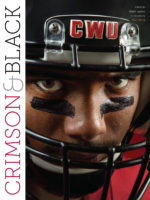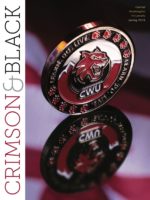Good day!
As an avid motorcyclist and BMW rider this is just a bit of a jab at the story chronicling Alena Yastchenko. Her Ural motorcycle really wasn't designed in 1936...at least not as a Ural.
This motorcycle was a copy of the German WW2 R-71 Military Motorcycle that was used by the German Army so effectively during their Blitzkrieg Operations across Europe at the start of the war. The Russian military observed the utility of a motorcycle for scouting and liaison work and procured several of them through Sweden in the early part of 1940 or so.
There were actually two different producers of what was, in effect, a reverse-engineer BMW motorcycle (Ural and Denpr) without the quality control of the German version. These were produced at several factories from about 1941 onward but as the German Military advanced East as part of Operation Barbarossa, production at many war related facilities moved further East near the Ural Mountains...hence the name Ural.
At the end of the war these BMW clones were being made for the military and home market with an eventual eye towards export. These copied BMW motorcycles then evolved into the Ural of present day...even with a version that represents what the Russian Military was using in the 1940's, right down to the powered third wheel of the sidecar.
Also, a 750 cubic centimeter (cc's) engine on a Ural does not produce 160 horsepower. 750 cc's actually equates to a 45 cubic inch engine displacement and the current Ural puts out about 42 horsepower.
The story was fun, her legacy no doubt will have an impact...but...the article did have some fact checking that wasn't (from a motorcycle rider's standpoint) complete.
And to other Ural trivia, these motorcycles were exported to China where yet a clone-of-a-clone was produced by China. They called their Ural a Chang Jiang. To go one step further, Japan was producing Harley Davidson motorcycles prior to WW2 under a license from Harley Davidson. These were called the Rikuo and were produced for the Japanese home market and military from about 1930 through the 1950's.
This meant that as Japan fought with Russia in the 1940's that Russian forces were riding a copied BMW against Japanese forces riding copied Harley Davidsons!!!
Thanks!
Brad Thompson ('85)
Auburn, WA
Mr. Thompson:
Thanks for your informative letter. We had no idea there was so much history to Dr. Yastchenko's motorcycle! We appreciate your comments and the fact you enjoyed the magazine. We'll do our best to double-check our facts in the future.
* * *
Just finished reading the Fall 2019 issue. It’s a very impressive issue. But one question—on the In Focus Page (inside of back cover), when did they change the second line of the Fight Song from “and on to victory” to “show ‘em er have no fear.”
Thanks,
Jerry Semrau, BA, 1960.
Mr. Semrau:
Thanks for the message. According to our creative director, as well as the artist, apparently there are several versions of the fight song. A quick look at recordings on YouTube revealed a number of variations. The artist picked the most recent version (https://www.youtube.com/watch?v=ztLkqv4PXsQ) but did make one slight change at the end, removing the word, Ellensburg, since the theme of the issue was University Centers and she wanted to be more inclusive.
Please don't hesitate to let us know if you have any other questions!



comments powered by Disqus